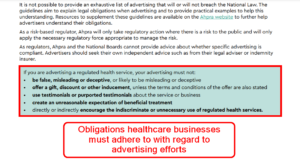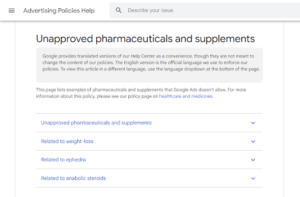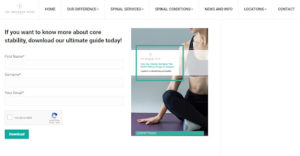Marketing is a bit like a puppet show. To some extent, anyone can dabble in marketing, just as anyone can pull a puppet’s strings and create a few jerky movements. But to do marketing well – to really make the puppet dance and captivate the audience – takes skill, discernment and finesse.
The intricacies matter, especially in healthcare marketing. You’re walking a tightrope here, trying to abide by strict AHPRA / TGA regulations that limit what you can say while also creating a compelling campaign that brings new patients to your practice.
Because you need those patients to survive, let alone thrive. The reality is that patients drive profits. And every practice needs profits to survive, fund the delivery of care and make service improvements.
So how do you attract patients to your practice? How do you ensure they return to your practice for their ongoing healthcare needs?
You have to persuade them of your value. And you do that through a well-crafted and executed marketing strategy.
Achieving your marketing objectives despite constraints
While you can learn from general marketing advice, it doesn’t always translate well to healthcare marketing. You’re in a unique industry and that affects every aspect of your marketing.
Limitations affecting how you market healthcare services include:
- Compliance considerations (keeping on the right side of AHPRA and the TGA)
- Privacy concerns – Google will no longer let you run ads targeting people with specific health conditions
- Clarity around your marketing metrics due to the constraints with tracking through online booking systems – which can make it hard to know if your efforts are succeeding or not.
The Splice Marketing team has been navigating the challenges for over 5 years. Here’s our advice on how to market your practice successfully within these constraints.
Challenge 1: Marketing in a highly regulated environment
The government is rightly concerned about protecting consumers from misleading health information. That’s true of Google too – it wants to direct users to reputable sites where they’ll find helpful information.
Regulatory agencies such as the Australian Healthcare Practitioner Regulation Agency (AHPRA) and the Therapeutic Goods Administration (TGA) have strict rules governing the marketing of healthcare services and therapeutic goods / medical devices.
These rules govern everything you say in promoting your practice, including on your:
- Website
- Social media accounts
- Blogs or videos
- Printed ads.
As far as AHPRA goes, you must ensure you comply with your obligations under the National Law (or the Health Practitioner Regulation National Law to give it its proper title). This dictates the obligations regulated health services must adhere to in all advertising efforts.

To add another layer of complexity, if you’re a regulated health service selling therapeutic goods like medicine or a medical device, you must also comply with Australian Consumer Law.
That’s a lot of red tape, isn’t it?
It’s a complicated and nuanced system. It serves an important purpose in protecting consumers from misinformation. But it’s important that you’re protected too. There are serious penalties for breaching government advertising guidelines.
As a healthcare marketing agency, we’re very familiar with these regulations. Our staff undertake regular training from healthcare lawyers with AHPRA experience and have also completed TGA advertising courses. We know how to help you deftly market your services while remaining on the right side of the law.
Check out the Splice Marketing AHPRA Compliance Guide here.
Challenge 2: Targeting limitations
One of the biggest challenges in healthcare marketing is targeting. Targeting is the art of reaching your ideal customer.
For some businesses, it’s finding people with expensive tastes who might buy your new brand of upmarket luggage.
For others, it’s finding people with an interest in home renovations or property maintenance who might value your handyman services.
For you, it’s probably finding people who live with a specific health condition or health concern.
We’ve created a table to break down the various digital channels such as Google Ads and social media and how easy or difficult it is to target health consumers.
Table 1: Digital channel and ease for targeting health consumers
| Digital channel | Targeting options | Ease of targeting |
| Google Advertising | Target people based on keywords and search terms. | Moderately easy however, it’s important to note that Google has a number of policies around advertising a medical or healthcare service and therefore, you should consult a healthcare marketing agency to ensure your Google ads meet the Google ads policy. |
| Google search or search engines | Target people based on keywords and search terms e.g. IVF treatment or managing type 2 diabetes | Moderately easy – if you know what you’re doing. To perform well in search marketing, your website needs to be among the top few results listed on the page. Achieving that requires a long-term, consistent investment in content marketing and search engine marketing. The payoff is worth it though. Being in the top few results means far more patients will visit your website where you can convince them of your value and make it easy for them to book. |
| Social media advertising | Target people based on demographics and locations. | Location: relatively easy to target a general population in a certain radius of your practice. Demographics: very challenging to almost impossible to go deeper and target people based on health concerns, interest areas or job titles. |
| Remarketing (marketing to someone who’s visited your website) | Privacy regulations often prohibit targeting medical conditions. | Very challenging to impossible – read our blog on the topic. |
To make matters more complicated, digital channels are constantly reviewing and changing their privacy policies, which significantly affects healthcare marketing.
To succeed, you need:
- An agile mindset and a willingness to pivot when necessary
- Broad targeting
- Very well-crafted ads (copywriting and design) to get the attention of the key sub-segment of the broad audience.
Our approach/workaround
A good healthcare marketing strategy will often rely on understanding the patient and their conditions and then finding a message-to-channel match.
It’s a bit like fishing – and just like fishing, it requires patience. We start by casting the net wide, waiting for the bites, and then refining the targeting over time to get the best result (expect 2.5+ months for this process).
For Google ads, our targeting strategy is to create ads that show based on common terms searched by a patient. This includes everything from questions about a condition to searching for appointments with a specific healthcare provider.
Challenge 2: Prohibited advertising
Pay-per-click advertising is a faster method of bringing your business to the top of Google’s search results. Your ad appears right there, giving you brand exposure, website traffic and – crucially – leads and sales.
But…you need to know what you’re doing or you’ll waste your advertising budget.
Google puts many restrictions on healthcare marketing because it’s such a sensitive subject. You’re often dealing with an anxious audience with legitimate concerns about their health and wellbeing. Google is very cautious about which ads or websites it will show them.

For example, you:
- Can’t advertise certain pharmaceuticals and supplements at all, including opioid painkillers
- Can’t advertise speculative/experimental medical treatments
- Can only advertise some services (such as addiction treatment or prescription drugs) in certain countries
- May need a Google certification to advertise certain products or services
- Will find that some ads are restricted, meaning their reach is significantly curtailed, which renders them unprofitable
- Can’t use certain phrases in your ad copy or landing page
- Can’t retarget ads – you can’t identify people who’ve clicked on your ad then advertise to them again to build on the interest they’ve shown.
Let’s unpack the last one a bit. Retargeting works so well because it uses a lot of online user data. Google’s OK with that when the data is not particularly sensitive. But you work in healthcare. Google won’t allow retargeting in healthcare ads due to privacy and ethical concerns.
So, what’s the workaround?
The best strategy here is to use your ad to persuade your target audience to give you some data that you can use.
Create a landing page that’s strongly focused on conversion – which includes persuading someone to give you their email address. You can tempt them to do that with a good lead magnet, like a downloadable resource or an opt-in form. Once you’ve got their email address, you can use it in email marketing.

Challenge 3: aligning marketing performance with the patient journey
The patient journey refers to the series of a decisions a patient makes from the time they start searching for help to the time they choose a provider and book an appointment.
Steps on the patient journey may include:
- Researching a particular health condition
- Reviewing available treatment options
- Researching the types of healthcare providers that could help them
- Narrowing this down to local providers and exploring the websites of the top contenders
- Booking – either directly or after getting a referral from their GP.
Sometimes that’s all done within a few hours to a few days. Someone with terrible toothache will find a dentist quickly and someone who’s twisted their ankle will rapidly find a physio to help them get back on their feet.
On the other hand, someone looking for long-term care for a chronic condition or needing surgery will probably spend more time choosing the right provider because it’s a more significant decision. It’s unrealistic to expect new bookings overnight if your patients require time to weigh up their options.
Why does the patient journey matter for your marketing? Because you’re trying to walk alongside them. Successful marketing means having your brand present along the patient’s journey so that when they are ready to book, your practice is front of mind.
Challenge 4: Tracking metrics to assess ROI
Tracking accurate metrics on the success of your marketing is only possible if we’re granted full access to your booking system.
One of the benefits of digital marketing is that it generates very useful data, which provides insights into whether your marketing generated a good return on investment (ROI).
That’s vitally important – you need to know whether your campaign achieved its goals of creating new bookings. If so, how many people did you reach?
Marketers refer to new bookings as ‘conversions’ and do our best to track them. However, conversions can only be accurately measured if your online booking system or booking form allows for tracking codes to be installed. If this is possible, it generates a clear picture of where a patient found you and when they booked.
If you cannot install codes to track bookings due to restrictions with your website or booking system, then marketers can only track ‘leads’ – the number of people who contacted you by calling or visiting a booking page.
Putting it all together
Solving tracking challenges in healthcare requires patience, a motivated team and perhaps some custom integration development.
That involves navigating through technical complexity (as outlined above). But it also involves crafting an empathetic message that supports your audience and subtly demonstrates your authority. Healthcare marketers and healthcare copywriters are highly skilled at finding this balance.
Splice Marketing is ideally placed to help you benefit from a finely honed strategy to market your services to your ideal customers.
If you’d like to learn more, please book your free consultation.




